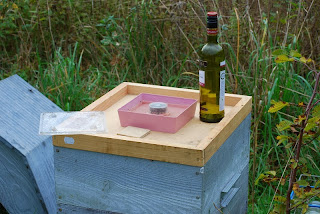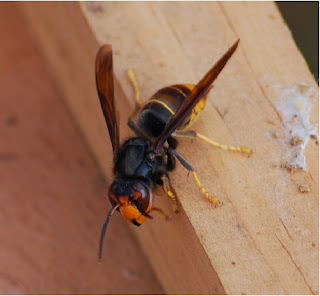I know it is stating the
obvious but every year is different in the natural world and no two years can
be the same, however this is becoming increasingly exaggerated.
Habitat loss, agricultural
methods and climate change along with other factors are causing rapid major
changes for our native species requiring them to adapt or perhaps in some cases
disappear completely.
For some species this is
creating opportunities and they have expanding populations that are sometimes
associated with an expansion in their range. However for most species there are
accelerating declines and this in turn leads to changes of behaviour as species
attempt to adapt.
Where I live most insect
species have been in overall decline for the last 25 years and this year has
been abysmal for them but I want to talk specifically about hornets.
Following
the usual slow start as nests were established and populations grew I started
to see a gradual increase in both Asian and European hornets in the 2nd
half of July and there are presently sizeable numbers of both around the hives
and where the bees take water. Of course it’s to be expected that the Asian
hornets would be behaving like this but it’s the native European hornets that
are behaving differently in so much as they are concentrating their activity on
taking honey bees. They always do take some but this is different and I can
only speculate that it’s the shortage of all the usual insects they take to
feed their larvae. This in turn is putting them more in harms way than would
otherwise be the case and I have been finding several dead European hornets in
front of hives.
Unlike the Asian hornets that
keep their distance I have noticed that our native hornets tend to get very
close to the hive entrance, even briefly landing on it, so it was no surprise that
when putting the mouse guards back on the hives for winter the other day I saw
a European hornet mobbed by a mass of guard bees when it got too close to the
hive entrance. The hornet didn't stand a chance but it was 45 minutes before
the bees were finally satisfied that they had dealt with her.
Amazingly no bees died in the
process.
Chris

































